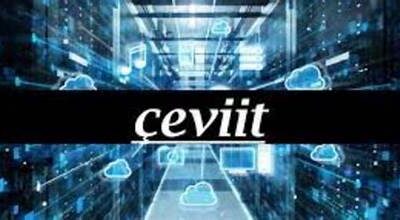Education
Brian Tyler Cohen’s Educational Background

Renowned for his significant influence in the political and media spheres, Brian Tyler Cohen is a well-known individual. His transition from academia to advocacy is a remarkable story of commitment and hard work.
Early Life and Education
Childhood and Upbringing
Brian was raised in [location] and had [certain childhood experiences] during his formative years. His upbringing shaped his future endeavours by instilling in him [fundamental values or beliefs].
Education Background
Brian Tyler Cohen was a fervent student who followed his studies. He demonstrated an early aptitude for [certain subjects or interests] while attending [school/university]. His academic career was shaped by [notable achievements or engagements], which provided a platform for his further pursuits.
Academic Achievements
Brian showed a sharp mind and a desire to learn throughout his time in school, performing exceptionally well in a variety of subjects. His professional path was marked by a variety of successes, ranging from [name notable successes] to [name specific academic honours].
Career Journey
Entry into Politics
Brian Tyler Cohen’s foray into politics began with [early political involvements or interests]. His passion for [social justice, political reform, etc.] steered him towards [specific political avenues], where he showcased a knack for [mention relevant skills or contributions].
Notable Career Milestones
His career journey witnessed significant milestones, including [highlight key events or career advancements]. His dedication to [cause or ideology] propelled him towards [mention impactful roles or positions], solidifying his presence in the political arena.
Impact and Contributions
Brian had an impact on [name specific areas of impact], influencing [relevant communities or policies] with his contributions. His dedication to [certain causes or advocacy] won him a lot of respect and admiration, which increased his power to bring about change.
Media Presence and Advocacy
Digital Media Presence
Brian Tyler Cohen’s emergence in the digital sphere showcased his prowess in [media platforms or content creation]. His engaging presence and articulate discourse on [relevant issues or topics] resonated with a broad audience, fostering a platform for informed discussions.
Advocacy and Activism
Beyond media, Brian’s advocacy efforts extended to [mention areas of advocacy]. His initiatives aimed at [specific goals or societal changes] brought attention to [pressing issues or injustices], amplifying his role as a catalyst for positive change.
Influence and Outreach
His impactful advocacy and media presence garnered widespread attention, expanding his outreach to [mention demographics or audience reach]. Brian’s ability to connect and engage with diverse audiences further solidified his position as a respected influencer and advocate.
Conclusion
The transition of Brian Tyler Cohen from education to advocacy is a prime example of a smooth move motivated by enthusiasm, hard work, and a desire to bring about significant change. Audiences around the world are still inspired and influenced by his multifaceted approach to societal issues and captivating media presence.
Education
Knowing about Human Behavior Correctional Education

An educational strategy called “Human Behavior Correctional Education” aims to address and change an individual’s behaviour in a correctional or rehabilitative setting. The goal of this type of instruction is to help people who have participated in criminal activity develop more positive attitudes, thought processes, and behaviour patterns. With the ultimate goal of reintegrating offenders into society as law-abiding citizens, rehabilitation is prioritised over punishment.
Key components of Human Behavior Correctional Education include:
-
Psychological Interventions:
- Counseling and Therapy: Individual and group counseling sessions can help offenders explore the root causes of their criminal behavior, address mental health issues, and develop coping mechanisms.
- Cognitive-Behavioral Therapy (CBT): This approach targets distorted thinking patterns and helps individuals develop more constructive thoughts and behaviors.
-
Educational Programs:
- Academic Education: Providing offenders with access to educational programs, including basic literacy, high school equivalency, or vocational training, can enhance their skills and increase their chances of successful reintegration into society.
- Life Skills Training: Teaching practical life skills, such as communication, problem-solving, and financial management, helps individuals navigate daily challenges and make positive choices.
-
Employment and Vocational Training:
- Job Skills Development: Offering vocational training programs equips offenders with marketable skills, increasing their employability upon release.
- Work Release Programs: Allowing individuals to participate in supervised work programs while incarcerated helps them build a work history and transition back into the workforce.
-
Restorative Justice Practices:
- Victim-Offender Dialogue: Facilitating communication between offenders and their victims can promote accountability, empathy, and understanding.
- Community Service: Engaging offenders in community service allows them to give back to society and develop a sense of responsibility.
-
Behavioral Management and Incentive Programs:
- Positive Reinforcement: Implementing incentive programs for positive behavior encourages individuals to adhere to rules and engage in pro-social activities.
- Sanctions for Misconduct: Consistent and fair consequences for rule violations help maintain a structured environment and discourage negative behavior.
-
Reentry Planning:
- Post-Release Support: Providing support services, such as housing assistance, substance abuse treatment, and mentoring, helps individuals successfully reintegrate into the community.
Human Behaviour Correctional Education understands that behaviour modification is a difficult process that calls for a diversified strategy. This strategy aims to lower recidivism and encourage long-term rehabilitation by addressing the root causes of criminal behaviour and providing people with the required tools and resources.
Education
Exploring The Evolution of South Education Centers

The Evolution of South Education Centers
Southern education has experienced a significant metamorphosis characterised by innovation, adaptation, and expansion. South Education Centres have come a long way since its modest beginnings, meeting a wide range of needs as it navigated societal changes and technological innovations.
South Education Centers
In the southern part of the globe, education has been a cornerstone of societal development. Initially rooted in traditional teachings, these centers have experienced a remarkable metamorphosis over time.
Historical Overview of South Education Centers
Early Developments
The roots of South Education Centres can be found in early civilizations and indigenous teaching strategies. At first, these centres concentrated on fundamental knowledge and abilities necessary for survival and the advancement of society.
Key Milestones
With the passage of time, the establishment of formal educational structures became evident. Landmark moments, such as the introduction of formal schooling systems and the proliferation of educational institutions, mark crucial milestones in the evolution of these centers.
Evolution of Curriculum and Teaching Methods
Traditional Approaches
The traditional educational landscape in the South was characterized by rote learning and conventional teaching methodologies deeply rooted in cultural norms and societal values.
Modern Adaptations and Innovations
To accommodate a variety of learning styles, South Education Centres have adopted progressive teaching methodologies in recent years, incorporating technology, interactive learning tools, and individualised approaches.
Impact of Technology on South Education Centers
Technological advancements have revolutionized education in the southern hemisphere, offering interactive platforms, digital resources, and distance learning opportunities, democratizing access to education.
Socio-cultural Influences on Educational Evolution
Diversity and Inclusivity
The South’s rich cultural diversity has had a big impact on educational policies, which now emphasise inclusivity, multiculturalism, and acknowledging indigenous knowledge systems.
Socio-economic Factors
Challenges stemming from socio-economic disparities have prompted initiatives aimed at bridging educational gaps and promoting equitable access to quality education.
Challenges Faced by South Education Centers
Access and Equity Issues
Despite strides in education, disparities in access persist, especially in remote regions. Addressing these inequalities remains a primary challenge.
Adapting to Changing Needs
South Education Centers continually face the challenge of adapting curricula and teaching methods to meet the evolving needs of a dynamic society.
Future Prospects and Trends in South Education Centers
Technological Advancements
The integration of artificial intelligence, virtual reality, and adaptive learning technologies heralds a promising future in education across the South.
Pedagogical Shifts
It is projected that interdisciplinary approaches, competency-based education, and personalised learning will become more prevalent, promoting a more comprehensive learning environment.
Conclusion
The development of South Education Centres represents an incredible journey characterised by creativity, flexibility, and a dedication to serving the educational needs of a wide range of populations. Future plans for these centres indicate that they will usher in an inclusive, technologically advanced era of education.
Education
Into the Light Once Again Chapter 31

With its complex narrative and well-rounded characters, “Into the Light Once Again” has enthralled readers. Fans will be begging for more after the tale takes an unexpected turn in Chapter 31.
Recap of Previous Chapters
Let’s take a moment to review the major events that have transpired in the previous chapters before diving into Chapter 31. The narrative has been formed by the protagonist’s travels, conflicts, and relationships.
Unveiling the Plot in Chapter 31
A major plot point is revealed in Chapter 31, which also clarifies the main conflict. By deftly introducing novel features, the author keeps readers on the edge of their seats.
Character Dynamics
Character dynamics are significantly altered in this chapter. The story is made more complex by the testing of relationships, the formation of alliances, and the emergence of unexpected coalitions.
Suspense and Intrigue
Suspense is expertly woven into Chapter 31 by the author. Plot and turns keep readers wondering and heighten their sense of suspense.
Impact on the Overall Story
The developments in Chapter 31 have far-reaching consequences for the overarching narrative. The story’s complexity deepens, and the stakes are raised, ensuring continued engagement.
Writing Style and Technique
The author’s use of literary devices and an engaging writing style in Chapter 31 is a noteworthy quality of her skill. The experience of the reader is improved by the employment of vivid imagery and compelling language.
Reader Reactions
Readers have flooded online platforms with reactions to the latest chapter. Emotions range from shock and excitement to anticipation, showcasing the chapter’s impact on the audience.
Predictions and Theories
Readers with a lot of enthusiasm have not held back when sharing their opinions and predictions regarding potential narrative twists. There’s a lot of speculating going on in the internet community, which makes reading more engaging.
Author’s Perspective
The author’s unique perspective adds depth to the narrative. Insights into the creative process and the inspiration behind Chapter 31 provide readers with a deeper connection to the story.
Comparisons to Other Chapters
Into the Light Once Again Chapter 31 and previous episodes can be compared to see how the plot and characters have changed over time. It is admirable how the author managed to keep things consistent while adding new details.
Artwork and Illustrations
Accompanying visuals in Into the Light Once Again Chapter 31 contribute to the overall storytelling. Illustrations enhance key moments, providing readers with a visual feast that complements the written narrative.
Community Engagement
Community discussions surrounding Chapter 31 demonstrate the series’ ability to foster a sense of community among fans. The shared enthusiasm creates a vibrant online space for fans to connect.
Impact on Series Popularity
The release of Chapter 31 has undoubtedly influenced the series’ popularity. Increased online discussions and social media mentions contribute to the series’ widespread recognition.
Conclusion
Into the Light Once Again Chapter 31 demonstrates the author’s skill as a storyteller. Suspense, character growth, and surprising story turns all work together to keep readers interested in the series.
FAQs
- Q: When can we expect the next chapter to be released?
- A: The release schedule for future chapters is determined by the author’s publishing timeline. Keep an eye on official announcements for updates.
- Q: Are there any plans for adapting the series into other media, such as a TV show or movie?
- A: While there may be discussions about adaptations, no official announcements have been made. Fans should stay tuned for any updates from the author or publishing team.
- Q: How do the author’s real-life experiences influence the narrative in “Into the Light Once Again”?
- A: The author has shared limited insights into personal experiences shaping the narrative. The story’s richness, however, suggests a deep connection between the author’s life and the fictional world.
- Q: Can readers influence the plot or characters through feedback?
- A: While authors appreciate reader feedback, major plot decisions are typically pre-planned. However, the community’s response may influence smaller details or character nuances.
- Q: Where can new readers start if they want to catch up on the series?
- A: New readers should begin with the first chapter of “Into the Light Once Again” to fully grasp the storyline and character arcs.
-

 News9 months ago
News9 months agoChad Hemenway News – Uncovering the Journey of a Remarkable Individual
-

 Business7 months ago
Business7 months agoGoogle Business Profile: Elevating Your Online Presence
-

 News8 months ago
News8 months agoDiscovering the Charm of Newports News: A Comprehensive Guide
-

 Tech8 months ago
Tech8 months agoUnraveling the Winds of Connectivity: A Deep Dive into Windstreams
-

 Tech8 months ago
Tech8 months agoWDROYO Technology: Revolutionizing the Future
-

 Travel9 months ago
Travel9 months agoUnleashing the Tranquil Power of Incense Waterfall
-

 Tech8 months ago
Tech8 months agoAll Access Technologies: Bridging the Digital Divide
-

 Entertainment8 months ago
Entertainment8 months agoWSerial: Revolutionizing Entertainment Through Digital Narratives












Pingback: Peter Zeihan Education - Tumbler News
Pingback: The Evolution of South Education Centers - Tumbler News